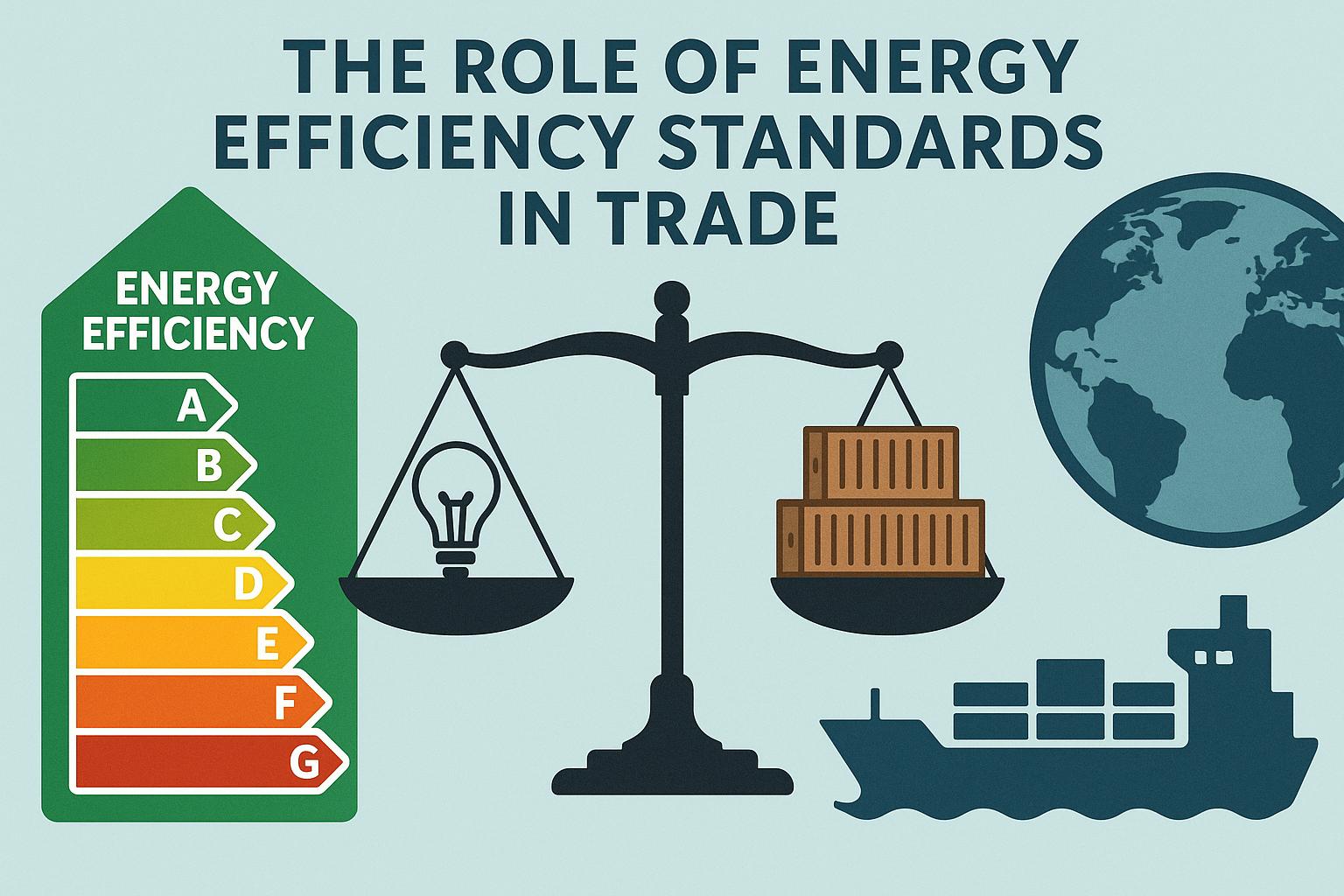Introduction
In today’s global landscape, characterized by increasing focus on sustainability and climate action, energy efficiency standards have emerged as a pivotal factor in the realm of international trade. These standards are crafted with the dual objective of minimizing energy consumption and reducing environmental repercussions. They present a mutually beneficial avenue for both economies and ecosystems. This article delves into the myriad roles played by energy efficiency standards in the arena of global trade, underscoring their critical importance.
Understanding Energy Efficiency Standards
Energy efficiency standards are essentially regulatory measures established by governmental entities or international organizations. These standards ensure that products, structures, and systems optimize their usage of energy resources. By setting definitive efficiency thresholds, these benchmarks aim not only to curb unnecessary energy usage but also to minimize emissions of greenhouse gases while simultaneously driving the progression of energy-efficient technological innovations.
Impact on Trade Dynamics
The influence of energy efficiency standards on trade dynamics can be perceived through various lenses:
Trade Barriers and Harmonization: Energy efficiency standards may function as non-tariff barriers in the context of trade, posing additional obligations on exporters. Nevertheless, they also kindle prospects for harmonization. When countries synchronize their standards, the result is often a reduction in trade-related friction caused by disparate sets of regulations, thus facilitating more fluid and efficient trade interactions.
Competitiveness and Innovation: Enterprises within jurisdictions that enforce stringent energy efficiency standards frequently pioneer advancements in technology. Such advancements not only bolster energy efficiency but also provide these firms with a competitive advantage, potentially opening up new international markets for their high-performance products. In this manner, these standards can significantly amplify a firm’s competitive position on the global stage.
Regional and International Cooperation
The essence of energy efficiency standards lies in collaboration. Regional and international cooperation is instrumental in the propagation of best practices and the alignment of standards.
International Standards Organizations
Organizations like the International Organization for Standardization (ISO) play a crucial role in developing universal norms. These norms act as an incentive for countries to adopt similar criteria, thereby smoothing the passage of goods across borders and simplifying international trade processes. Such organizations serve as a foundational pillar in creating a cohesive market landscape that transcends geographical boundaries.
Regional Trade Agreements
Trade agreements at a regional level, such as those initiated by the European Union or encapsulated in accords like the United States-Mexico-Canada Agreement (USMCA), often encompass clauses relevant to energy efficiency standards. The primary aim of these clauses is to synchronize standards and dismantle barriers within the trade bloc, leading to the creation of a more interconnected and seamless market environment.
Challenges and Considerations
While the benefits of energy efficiency standards are substantial, they also present several challenges:
Compliance Costs: The financial burden of compliance with energy efficiency standards can be significant, particularly for small and medium-sized enterprises (SMEs). Meeting these standards often requires adjustments, which can necessitate financial outlay. This is further compounded if firms must tailor their products to meet varying standards in different markets due to a lack of harmonization. Consequently, such compliance costs can affect their competitive standing in the international market.
Potential for Greenwashing: In the absence of stringent enforcement mechanisms, there exists a risk that companies may partake in “greenwashing,” falsely portraying their offerings as more energy-efficient than reality would suggest. This potential deceit undermines the credibility of the standards and can distort the genuine trade advantages that these standards are meant to foster.
Concluding Thoughts
In summation, energy efficiency standards are a cornerstone in redefining the contours of international trade. By reducing environmental impacts and promoting technological advancement, these standards pave the way for a sustainable future while shaping trade dynamics in profound ways. Nonetheless, the realization of these standards’ full potential is contingent upon robust international cooperation, diligent enforcement measures, and ongoing synchronization of standards to support seamless international trade operations. For those seeking deeper insights, consulting resources from entities like the World Trade Organization or the International Energy Agency could prove invaluable.
Through diligent application and adherence to energy efficiency standards, the global community can advance towards a future marked by both sustainable development and prosperous international trade partnerships. The integration of such standards not only reaps economic rewards but also contributes significantly to global efforts in combating climate change, ensuring a more sustainable and resilient world economy.

